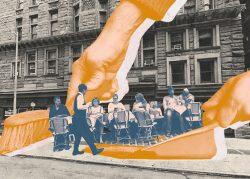 Manhattan retail rents tick up as recovery slogs along
Manhattan retail rents tick up as recovery slogs along
Trending
Retail asking rents show signs of recovery
City’s average ask nearly hit $58 psf in March: Marcus & Millichap

New York City’s office occupancy this month hit its highest level since the pandemic, and the retail market appears to be on a similar road to recovery.
The average asking rent in March increased 2.9 percent year over year, according to a quarterly retail report from Marcus & Millichap. The average asking rent in the city was $57.96 per square foot. Three of the four outer boroughs had average asking rents that exceeded year-end 2018 levels, with the exception being the Bronx.
The report projects the average asking rent in the city is expected to reach $58.45 per square foot by the end of the year, which would be the best mark since 2019. The biggest gains are expected in office-centric districts, such as Midtown and Lower Manhattan.
Recovery has been slow in the market so far and uneven across submarkets.
Vacancy rates for retail space are also slipping. Leasing has increased since the second quarter of 2021 and the vacancy rate dropped to 3.9 percent in March. Vacancy in Manhattan is down 30 basis points year over year.
Not all submarkets are created equal, though. Midtown South continues to outperform other markets with a 110-basis-point decline in vacancy year over year, while Downtown vacancy jumped 40 basis points, hitting a 9 percent vacancy rate.
Read more
 Manhattan retail rents tick up as recovery slogs along
Manhattan retail rents tick up as recovery slogs along
 Office occupancy in New York finally hits 40%
Office occupancy in New York finally hits 40%
 Billionaires’ Row landlord fed up with outdoor dining
Billionaires’ Row landlord fed up with outdoor dining
The report projects net absorption will exceed 1 million square feet by the end of the year for the first time since 2019 and the vacancy rate will drop to 3.8 percent.
Construction also appears to be on the way up. Marcus & Millichap expects more than 1.1 million square feet will be completed by the end of the year, despite slowed deliveries in the first quarter. Only 635,000 feet were completed during the year ending in March, down more than 500,000 square feet from the previous 12-month span; labor and supply shortages were blamed.




